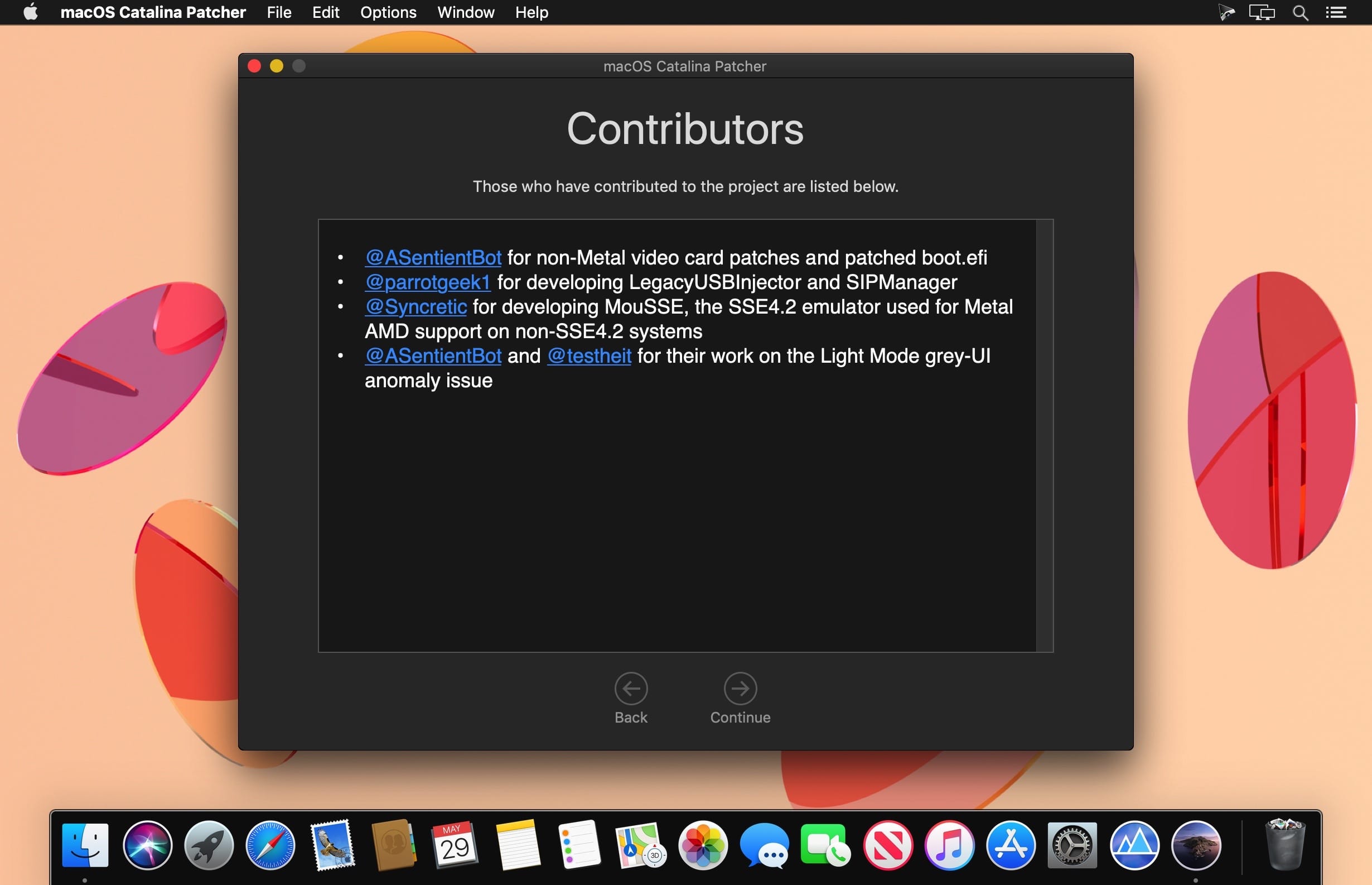
- #Foro macos sierra patcher for free#
- #Foro macos sierra patcher how to#
- #Foro macos sierra patcher install#
- #Foro macos sierra patcher update#
- #Foro macos sierra patcher Patch#
#Foro macos sierra patcher Patch#
If you happen to own any of the Penryn Macs mentioned above, the macOS High Sierra Patch Tool written by DOSDude1 will make running the latest software possible. High Sierra Patcher Tool For Unsupported S Patch Tool Written Late-2008 or newer MacBook Air or Aluminum Unibody MacBook (MacBook Air 2,1, MacBook 5,1).Įarly-2009 or newer Mac Mini or white MacBook (Mac Mini 3,1, MacBook 5,2) Early-2008 or newer Xserve (Xserve 2,1, Xserve 3,1).
#Foro macos sierra patcher install#
Using this still imposes certain limitations, but at least makes it possible to install macOS High Sierra on the following Macs: Early-2008 or newer Mac Pro, iMac, or MacBook Pro (MacPro 3,1 and 4,1, iMac 8,1 and 9,1, MacBook Pro 4,1, 5,1, 5,2, 5,3, 5,4, and 5,5).
#Foro macos sierra patcher how to#
How to Install macOS High Sierra on Unsupported Macs Though Apple doesnt support the above hardware officially, someone has thought about sharing the love for these older machines.Ī developer known as DOSDude1 has written a patch that works on Macs with the Penryn architecture. Obsolete products are those discontinued more than seven years ago. The company defines vintage products as those that have not been manufactured for more than five years but less than seven years ago. These machines are considered obsolete and vintage by Apple.
#Foro macos sierra patcher for free#

#Foro macos sierra patcher update#
The best way to avoid problems is not to update your Mac until Apple has released a couple of major bugfix updates for Monterey, which is usually smart to do with any new software release, whether there are widespread reports of problems or not. If you have vitally important data stored on your Mac and nowhere else, or if the DFU restore doesn't work, then contacting Apple should be your next step. If you keep decent backups, then it's worth the hassle to get your computer working again. If that doesn't work, you can attempt a full wipe and restore, at the cost of all the stuff on your Mac's internal drive.

If you use the "revive" option in the Configurator app, it will attempt to restore the firmware without touching the data on the drive. For PC owners, imagine if installing new Windows versions or Patch Tuesday security updates also updated your BIOS or graphics firmware, and that there was no way to get one without getting the other. Since 2015 or so, Apple has also distributed most firmware updates as part of the operating system rather than doing it separately (this also includes updates to the "bridgeOS" software that runs on Apple T1 and T2 Macs). When Apple releases new macOS updates, you aren't just getting updates to the operating system. We also have our own recommendations, as well as some hypotheses about why these major updates sometimes seem to cause a higher-than-usual number of hardware problems.

We've asked Apple about these anecdotal reports to see if there are any issues the company is aware of or guidance it has for people whose hardware stops responding to input after a software update. The reports rounded up by MacRumors mention multiple Intel Mac models, ranging from the 2015 model year all the way up to 2020, but don't mention Apple Silicon models-this makes some sense, since they update a bit differently than Intel Macs and may not be susceptible to the same problems. MacRumors has rounded up a representative swath of complaints from the Apple Support Communities forums and Twitter, mostly describing the same symptoms: unresponsive Macs that can't be revived using the typical SMC and NVRAM diagnostic catch-alls. Anecdotal reports from over the weekend indicate that the macOS Monterey update may be bricking some Macs during installation, leaving the machines unresponsive.


 0 kommentar(er)
0 kommentar(er)
